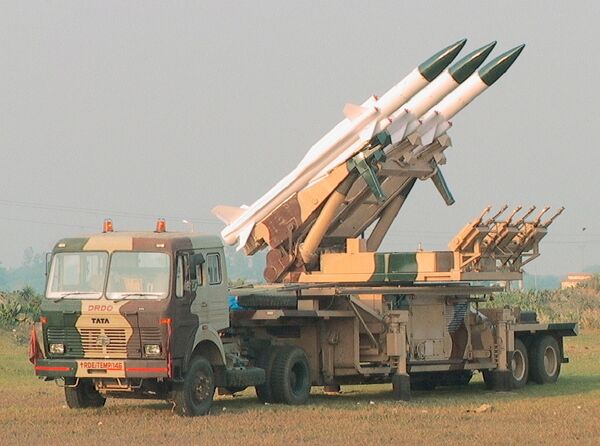
The Akash Air Force Launcher (pictured above) carries three Akash anti-aircraft surface-to-air missiles on a wheeled tractor-trailer combination. (DRDO)
The Indian Air Force and the Defence Research and Development Organisation (DRDO) have demonstrated the enhanced capability of the Akash semimobile surface-to-air (SAM) missile system to intercept four unmanned aerial targets from a single firing unit, the DRDO said in a social media post on 17 December.
According to the demonstration footage released by the DRDO, the Akash system's central acquisition radar (CAR) – capable of detecting and tracking aerial targets up to a range of 150 km at an altitude of 18,000 m – detected four aerial targets approaching the test site.
The CAR then co-ordinated with the system's Group Control Centre (GCC) through secure communication links, and the GCC deployed two Akash Air Force Launchers (AAFLs) – each seen armed with two missiles in the footage – to intercept the targets.
The AAFLs fired four missiles, which intercepted the aerial targets simultaneously at a distance of 25 km, according to the footage.
“India became [the] first country to demonstrate the capability of engaging four aerial targets simultaneously at 25 km ranges by command guidance using [a] single firing unit,” the DRDO said.
According to Janes Land Warfare Platforms: Artillery & Air Defence, Akash is a medium-range SAM system designed to cover a large amount of airspace and provide protection from various missile threats.
An Akash firing battery consists of four launchers (three Akash anti-aircraft SAM missiles per launcher vehicle), GCC, CAR, battery control centre, battery level radar (a phased-array tracking and guidance 3D sensor), battery surveillance radar (2D sensor), and support vehicles (power supply, missile transport, and engineering support).
Looking to read the full article?
Gain unlimited access to Janes news and more...







